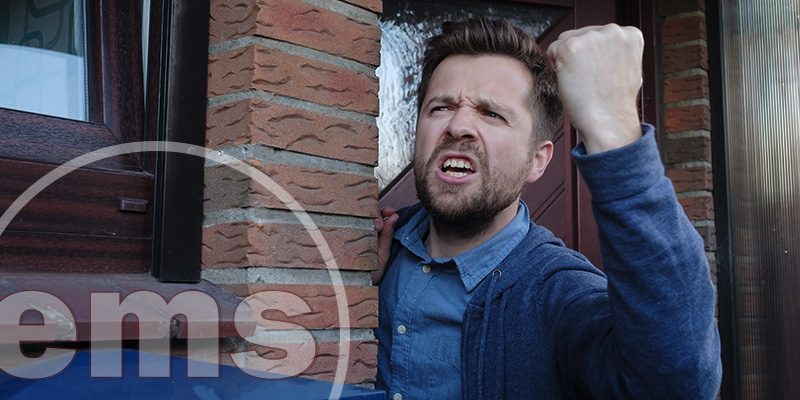No homeowners association is immune from HOA neighbor disputes. No matter the shape or size of the community, neighbors will fight for any number of reasons — that is just human nature. But, what can an HOA do about it?
HOA Neighbor Disputes: When to Get Involved
When it comes to neighbor-to-neighbor quarrels, the first decision an HOA board must make is whether or not to get involved. Some HOA neighbor disputes are fairly minor and go away on their own. However, there are disputes that require significant attention from board members, such as:
- Complaints related to nuisances restricted by the HOA’s governing documents, particularly the CC&Rs
- Claims that can potentially affect the safety, health, and welfare of the association’s members
- Disputes that involve a violation of the Fair Housing Act
Suppose the HOA board determines that their involvement is not necessary, that does not mean it should take no action whatsoever. The board must still remain responsive to the disputing neighbors when the issue is brought to them. Without getting involved, the HOA board must encourage the parties to remain civil and talk it out in a neutral environment. The board must motivate the neighbors to resolve their dispute in a calm and respectful manner, perhaps with the help of a professional mediator.
Seeking Confirmation
 When the HOA board receives a notification of the dispute, it must carefully examine the situation first. It is best for the board to assign someone, preferably a director or property manager, to investigate and document the complaint.
When the HOA board receives a notification of the dispute, it must carefully examine the situation first. It is best for the board to assign someone, preferably a director or property manager, to investigate and document the complaint.
This will allow the board to come to a conclusion as to whether or not it is necessary to interfere. The investigation must focus on the facts alone and should be completed in a timely fashion. When going through the situation, it is important to ask the following questions:
- Is the alleged conduct in violation of any federal, state, or local laws?
- Is the alleged conduct in violation of any association covenants or rules?
- How many times has the alleged conduct occurred?
- What comments does the accused have about his/her alleged conduct?
- Has the alleged conduct affected only one person or more?
- Are there any other members who support either party’s stand?
After gathering all the facts, the HOA board must then make a decision of whether or not to intervene. It is best to consult with an HOA attorney to determine the most suitable course of action. In addition to handling the situation properly, talking to a legal counsel can help shield the HOA from liability.
What Constitutes Harassment from a Neighbor
Disagreements happen in any community. But, there is a vast difference between HOA neighbors fighting and HOA neighbor harassment. When the latter occurs, the HOA should definitely intervene. According to the United States Department of Housing and Urban Development (HUD), there are two types of harassment:
- Quid Pro Quo Harassment. This type of harassment happens when party A (asks or demands inappropriate conduct from party B in exchange for a service, usually related to housing. Literally translates as “this for that,” quid pro quo harassment can be direct or implied.
- Hostile Environment Harassment. This type of harassment happens when a homeowner experiences prevalent or extreme inappropriate conduct that it impedes on the person’s right to enjoy their home.
When the HOA Is Liable for HOA Neighbor Harassment
The HOA must take action when harassment is present. Otherwise, the homeowner has a right to file a lawsuit against the association. To determine whether an HOA is liable in case of harassment, look for the following elements:
1. Protected Classes
The HOA is liable if a homeowner harasses a neighbor due to the latter’s race or color, religion, sex, national origin, familial status, or disability. These are known as the protected classes, according to the Fair Housing Act. But, there are also other protected classes in addition to the FHA’s list, depending on which state the HOA is located. For instance, in Indiana, additional protected classes include age, ancestry, and conviction record.
If the harassment involves the use of racial slurs, discriminatory statements or actions, and the like, the HOA must take action. On the other hand, if the harassment occurs because one party just does not like the other, then it does not fall under this category.
2. Hostile Environment
As mentioned above, hostile environment harassment involves extreme or pervasive harassment that affects the homeowner’s quality of life. This type of harassment is typically invasive, irritating, distressing, or disruptive. If the harassment has these elements, then the HOA must interfere to avoid liability. It is worth noting that physical or psychological harm is not a requirement. If the harassment took place, that is more than enough.
Because hostile environment harassment can be difficult to prove, thorough documentation is necessary to support the homeowner’s claims. As such, it is important to know how to document neighbor harassment. This usually means logging incidents and evidence, making sure to include specific facts like dates, times, and places.
3. Knowledge That Harassment Was Taking Place
Simply knowing about the harassment — whether in the form of quid pro quo or hostile environment — can hold the HOA accountable. The complaint or information does not even need to have come from the parties involved. It will still result in a similar conclusion if a third party had reported the incident. Moreover, the association can still be held liable even if no one disclosed it, provided the HOA was conceivably aware of the situation.
4. Power to Rectify the Harassment
 As per the Third Party Liability rule, the HOA can still be held liable if it had the power to do something about the situation but failed to do so. The HOA must always stay vigilant and take immediate action if discrimination or harassment of any type occurs in the community.
As per the Third Party Liability rule, the HOA can still be held liable if it had the power to do something about the situation but failed to do so. The HOA must always stay vigilant and take immediate action if discrimination or harassment of any type occurs in the community.
How to Stop HOA Neighbor-to-Neighbor Disputes
Typically, an association’s governing documents will contain what actions the HOA can take to deal with disputes. It is much easier to manage the situation if the dispute has to do with the association’s covenants or rules.
The board can address it in largely the same way as it would address HOA violations.
When it comes to harassment, though, the HOA must seek legal counsel from an attorney first. The association may also need to get in touch with law enforcement if the harassment poses a risk to the homeowner’s safety. The HOA can usually take the following courses of action:
- Cease and Desist. Send a letter to the offending homeowner, including details of the harassment and asking them to stop or else face repercussions like fines and sanctions or legal action.
- Mediation. Take part in a three-way mediation. If an informal mediation does not work, consider a formal mediation. This is particularly helpful if the harassment arose from a minor disagreement between the neighbors.
- Lawsuit. Should the situation fail to de-escalate, the HOA can help the homeowner sue neighbor for harassment.
Handling Neighbor Disputes the Right Way
Although some disputes resolve themselves, others can snowball and blow way out of proportion. Communities may also have residents that are aggressive by nature and are hard to deal with. No matter which type of HOA neighbor dispute arises, every association must remain prepared. It starts with determining whether or not to interfere with the situation. After that, a fact-based investigation and resolution should follow.
If your HOA requires assistance with managing the community, contact Elite Management Services. We offer a variety of services, including violations enforcement, maintenance management, and legal assistance. Call us today at (855) 238-8488 or email us at help@emspm.com for more information.
RELATED ARTICLES:
- Dealing With Difficult Homeowners
- HOA Violation Enforcement: How Should The HOA Enforce Rules
- Dealing With HOA Violations For Homeowners




